It’s an early December afternoon in Southern California. The sun has just set, yet the relentless Santa Ana winds coming straight off the nearby desert are barreling through our valley at more than forty miles per hour, forcing our vines to whip, thrash and break free from their ties.
Checking that vines are tied up to their posts is a tedious and repetitive task. You need the dexterity of a monkey to clutch plastic tape and scissors while holding the vine to wrap it securely to its metal post. You also need to watch your footing in our vineyard, which flows down a steep slope into a distant creek below. Get it wrong and you could roll from the top of the vineyard right to the bottom, probably never to be seen again.
The winds are making my task even harder, and as I step from one vine to the next I notice yet again a passing coyote has gnawed through an irrigation pipe in three places leaving a trail of destruction.
Stopping for a moment, I look up to see the once gray sky has turned into a dark band of angry orange as a huge wildfire has broken out less than a mile away. There’s a strong probability it’s heading directly our way.
A fair number of vines still need to be secured, as they’re bent almost double from the wind, and several are touching the ground. This means they stand a good chance of being gnawed upon by the gophers that just wait for an opportunity like this.

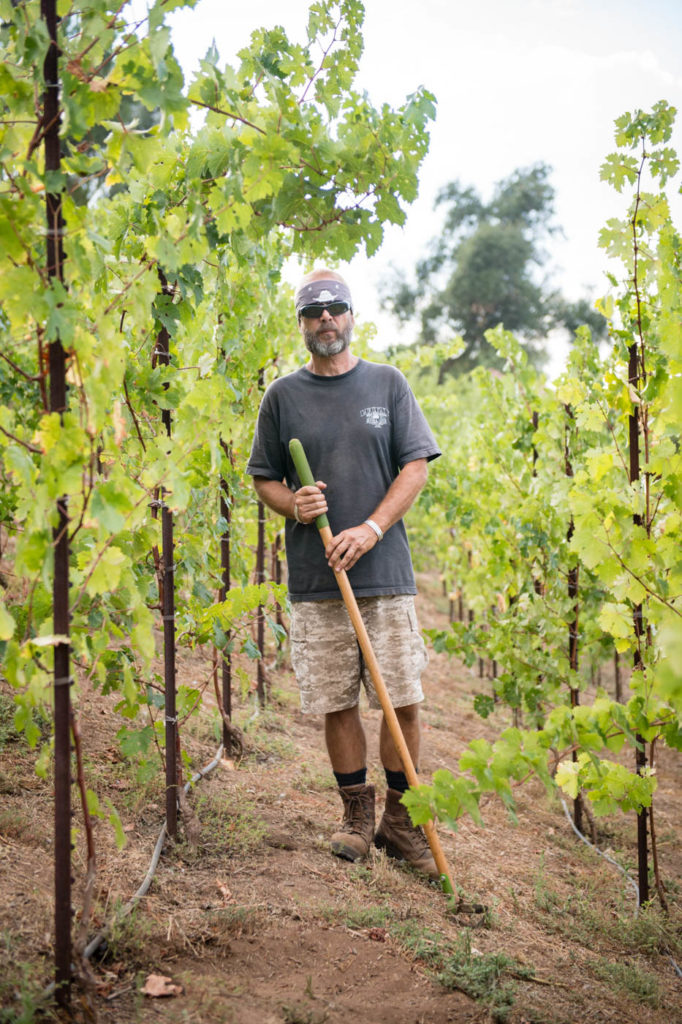
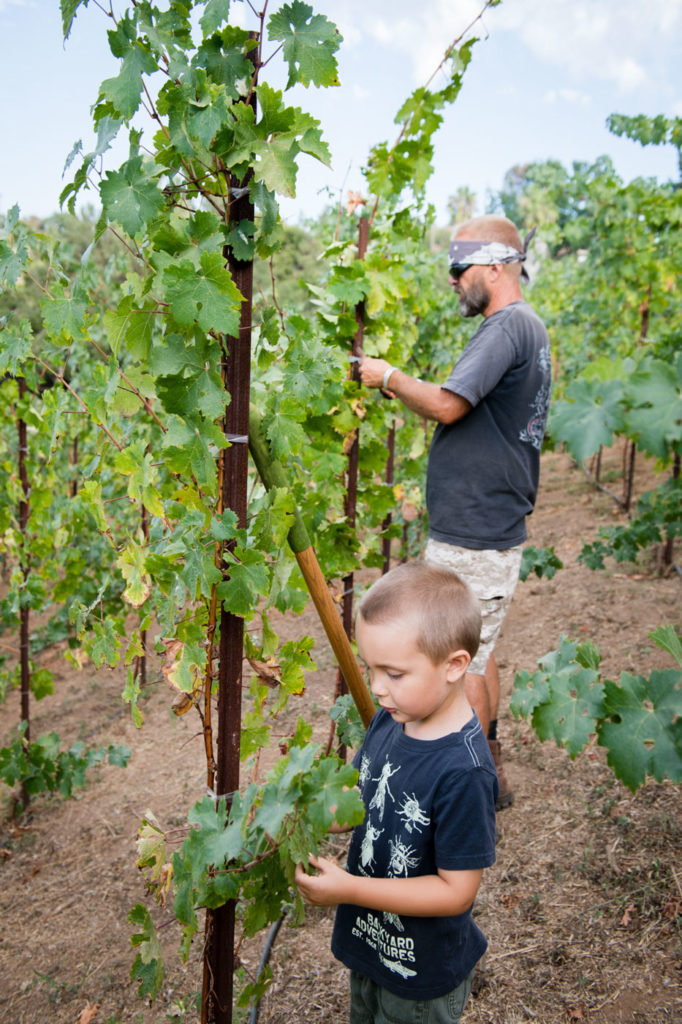
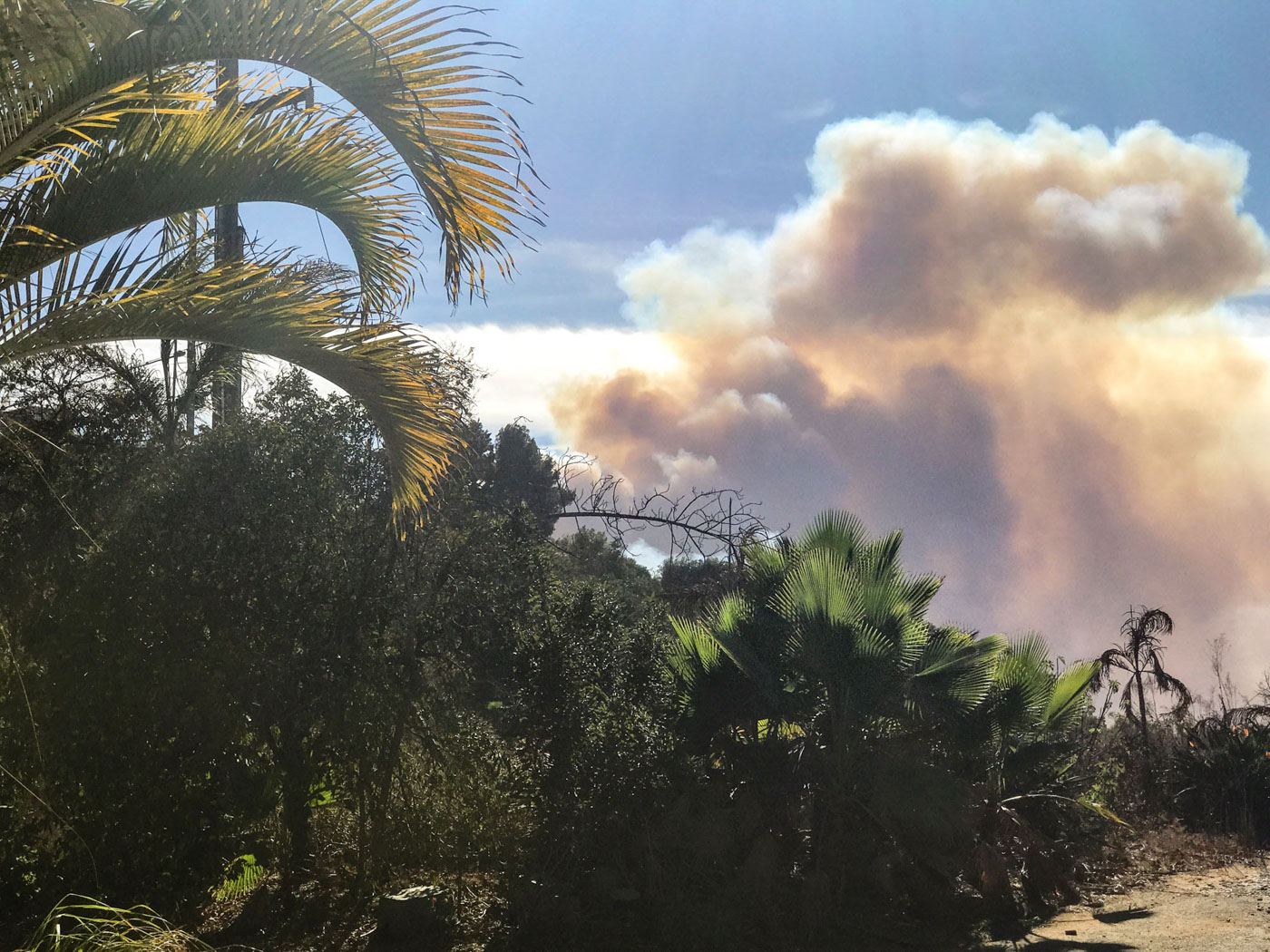
I can’t turn the water on to try and safeguard the vineyard from the impending fire (not that in reality it would have done anything as they would still have been burned to a crisp) as the irrigation pipes need fixing from the latest coyote visit.
When the local sheriff drives through our valley announcing through his tannoy that all residents need to evacuate, I realize I’ve reached the end of the line. Why on earth did I think planting and managing a vineyard would be a brilliant idea?
I should make it clear I have absolutely no agricultural background. This is my account of installing and operating a vineyard. This, however, is not a definitive guide of how to actually do it.
In hindsight, I think my ignorance might have been my saving grace. I had to learn on the job. Everyone from complete strangers who tell me about their grandfather’s grapevines that make excellent wine, to enthusiastic amateurs, to the actual professional growers will offer you their opinion on what you should do.
This can range from which type of vine to plant, to the amount of water needed, how to prune, when to fertilize, what diseases will kill your vines, to when to pick. Everybody—everybody—has an opinion about vines.
Take note and then make up your own mind. If you get to spend as much time in your vineyard as I do, you’ll pick it up pretty quickly and only you will really know what’s best for your vines.
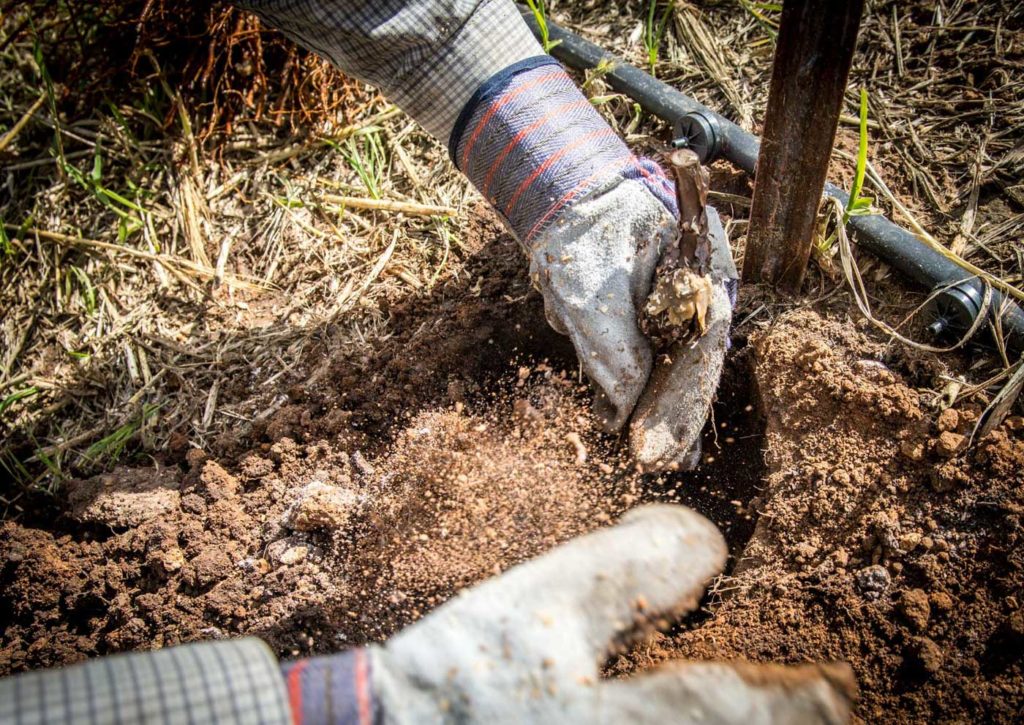
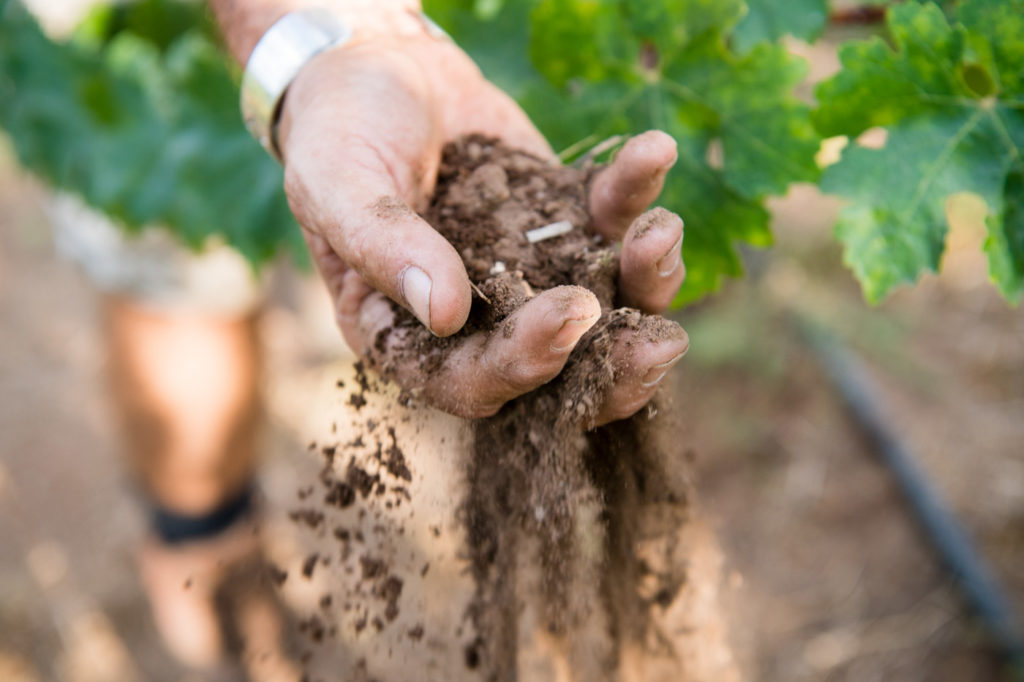
An Idea Is Planted
My wife Anne and I never set out to plant a vineyard. We bought a house four years ago in North San Diego County that came with a sizeable piece of land approximately an acre in size. The problem was that more than 120 avocado trees, barely alive, were growing there.
The previous owners told us we needed to water the trees just to keep them alive, but when I discovered each tree required a minimum of four hundred gallons of water a month and were all suffering from irreparable root rot, they were done.
The upside to the avocado trees was for almost thirty years they were left untouched, meaning the soil and land were in good shape. The downside was they all needed to be cut down, stumps removed, and the land re-graded.
The next issue was what to plant in their place. In 2014, just after we moved in, I spent several frustrating months trying to find someone who could give me some sensible options.
As San Diego County is California’s oldest wine growing region, we considered vines might be a good idea. I hunted high and low for someone who would come out and take a look and tell me if I was being stupid to even consider a vineyard.
Eventually I found a company from nearby Temecula, California, that specializes in vineyard planting. A young guy, complete with a fancy business card, came out to give us his thoughts. He stood on a wall overlooking our land and said that in his opinion I should grow citrus fruit and not vines, as the land was not good enough. After five minutes of agricultural talk he handed me a bill for $170 for his time and left.
I am always up for a challenge. In one final bid I sent an email to Fallbrook Winery, which is just down the road from us. In less than two hours I had a reply saying whilst the winery was well known for its wine most people did not know they specialized in installing vineyards and relied on small growers to supply them with grapes along with their own estate vineyards. They’d be happy to help.
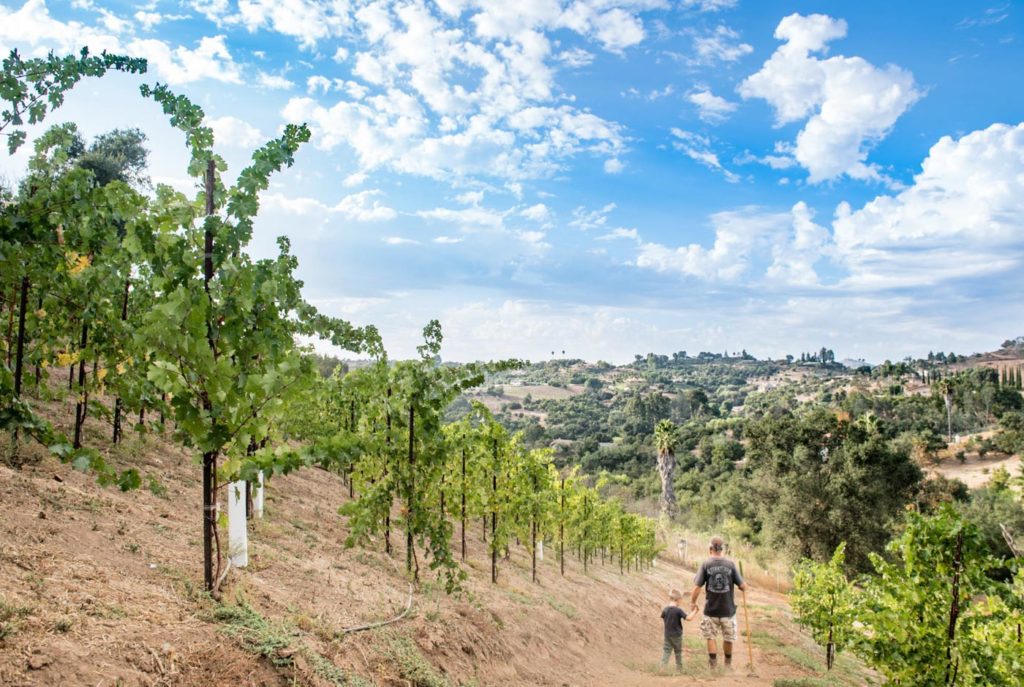
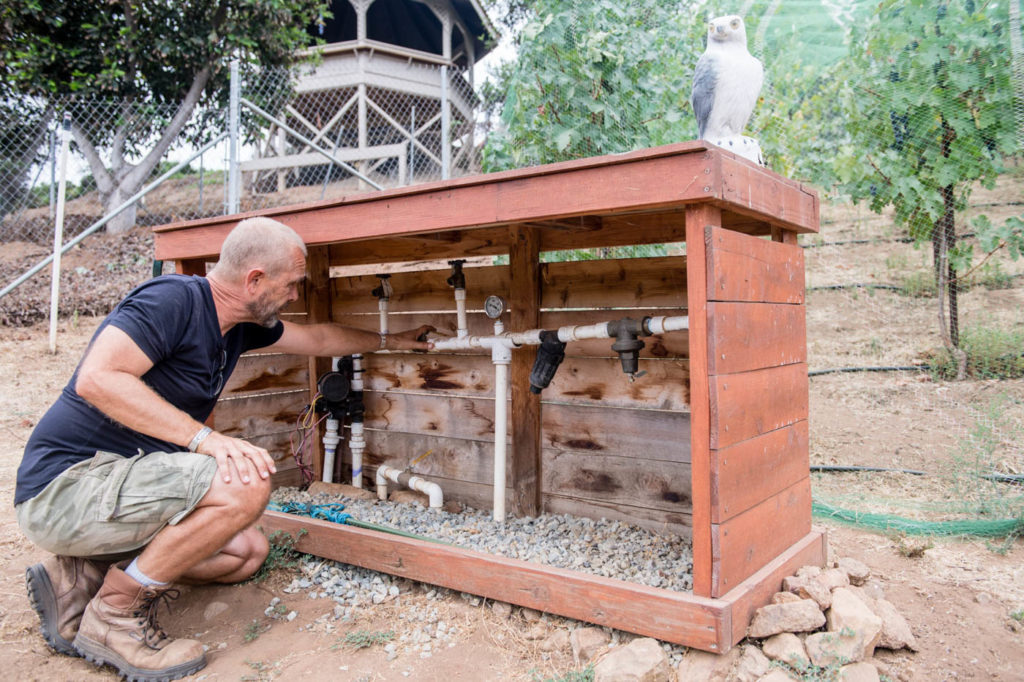
Irrigating the Idea
What happened over the next few months is still a bit of blur. But after looking at our land and carrying out an extensive soil sampling, Fallbrook Winery said there was no reason why we shouldn’t plant vines. The big problem was clearing the land.
So for ten days in the spring of 2015 we had a pair of bulldozers re-grade the land. It was imperative the soil was turned over to at least thirty inches deep to plant vines and all remnants of the old avocado grove be completely removed. Once finished, we were presented with a bill that on first inspection made me think I was the proud owner of two bulldozers as well as the re-grading work.
What we had got in return, though, was a much larger plot of land than we first thought we had. We now had close to two cleared acres.
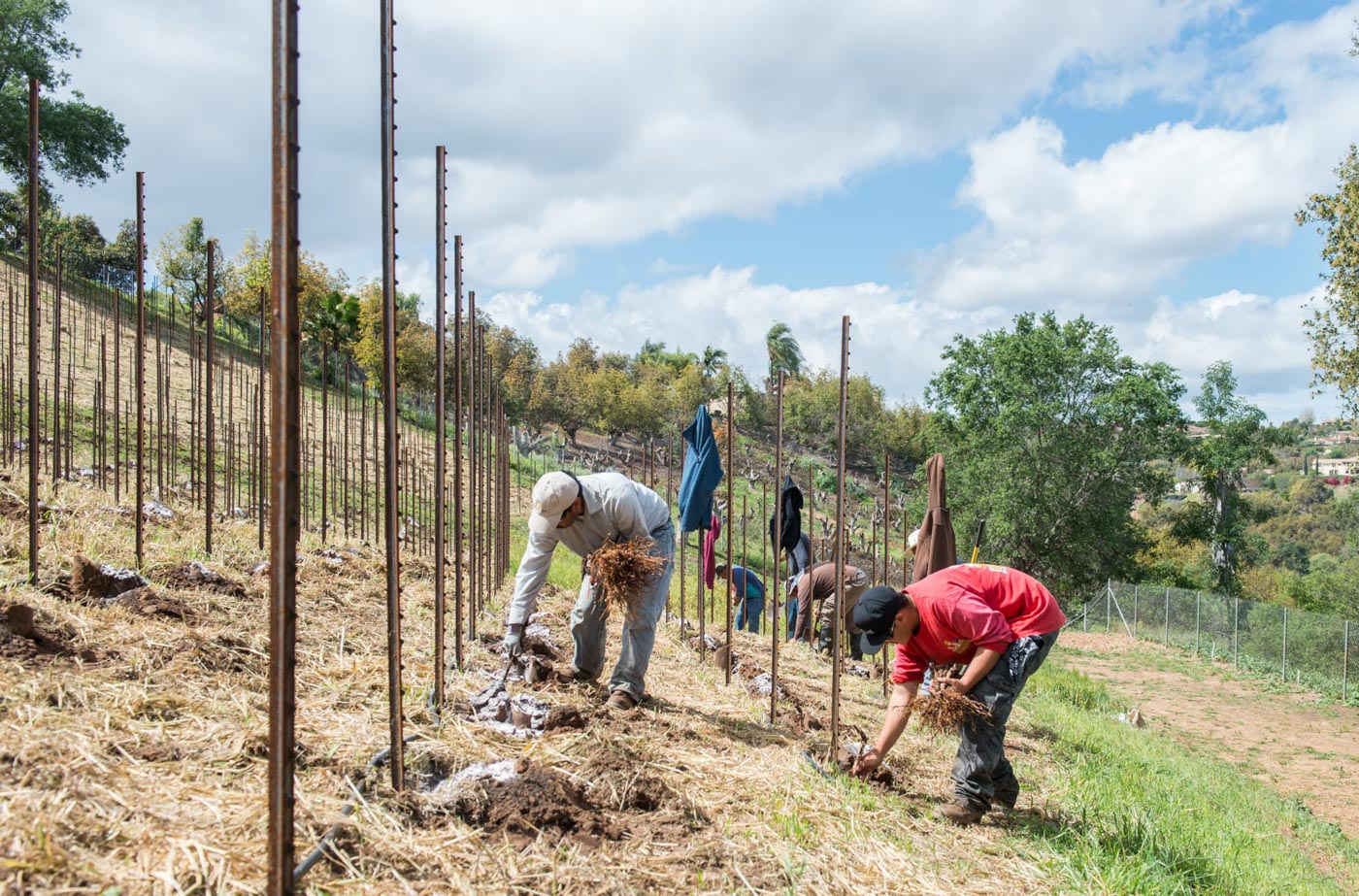
Patience Makes Perfect
From then on it was a case of waiting. That’s one thing I have learned about vines and vineyards: the waiting game. Waiting for bud break (when the vines produce their first leaves), waiting for the first flowers, waiting for the fruit to develop, waiting for the irrigation system to finish running. Waiting, and then more waiting. You simply cannot rush vines.
The next eight months meant we had nothing to look at but bare soil that needed to sit before we could start planting in February 2016. That gave us plenty of time to decide on which variety of vine we were going to plant and how we were going to lay out the vineyard.
Based on the area we had cleared, Fallbrook Winery suggested we could probably plant 850 vines using the conventional trellis system that most people associate with vineyards.
I wanted to see how many vines I really could squeeze into this plot and after a bit of debate, Fallbrook suggested we looked at the goblet style. This meant we could get at least 1,500 vines into the space with each vine growing vertically like a tree, supported by a metal pole. Aesthetically it would still look good, but it would also allow us to grow more grapes than the more conventional trellis system.
If I got this right we could be producing several tons of grapes a year once the vines had fully matured. In the scale of things we are about as small as it gets to be considered a commercial vineyard, but for a one-man show it’s a huge undertaking.
The only other fundamental issue was what were we going to grow. Anne is very knowledgeable about wine and knows what she likes and what she doesn’t. I know it’s either red or white, occasionally pink, and sometimes sparkling.
But for the next six months the discussions went back and forth. We have a north-facing slope, a lot of summer heat, and big variances in temperature from the bottom of the land right up to the top of the vineyard. In winter, the marine layer rolls in from the Pacific Ocean right up the creek and shrouds the bottom part of the vineyard in a thick layer of mist.
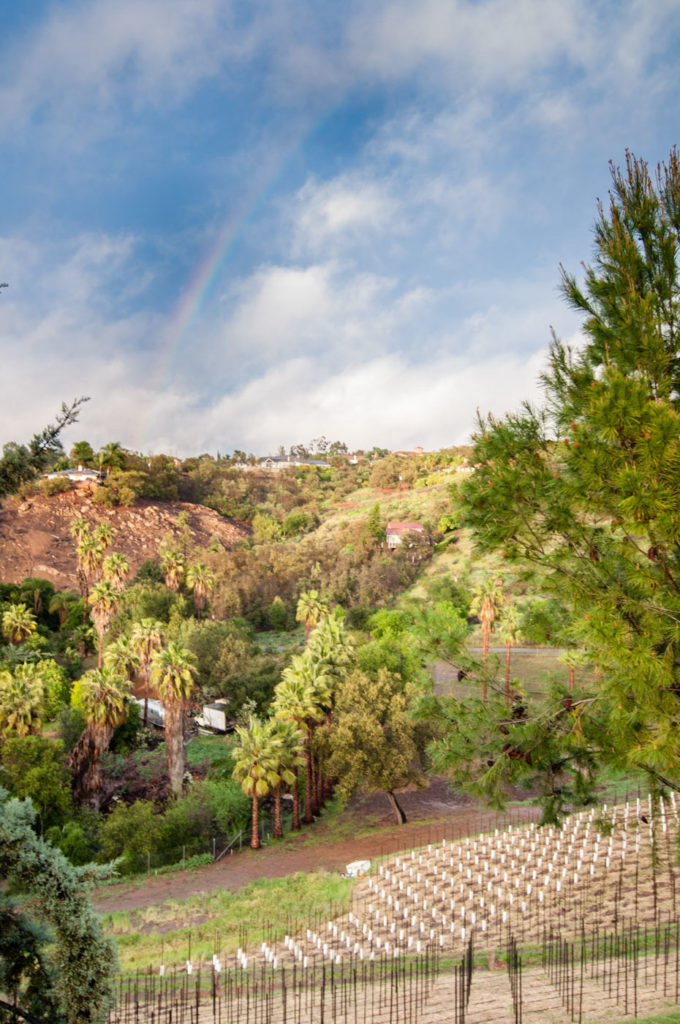
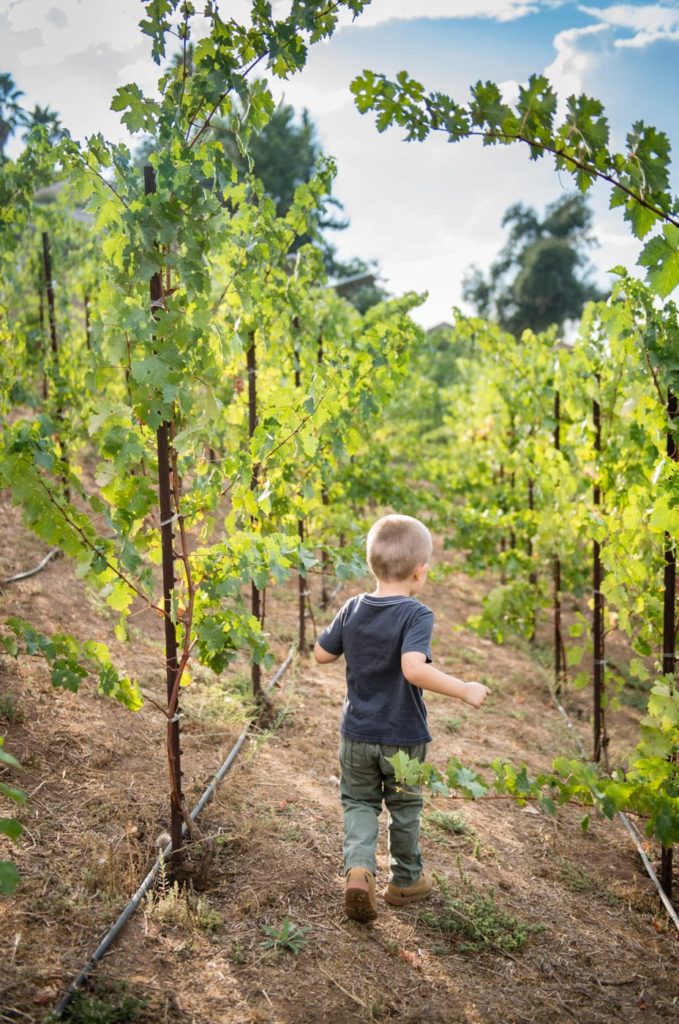
I am still astounded today at the vast number of grape varieties that would grow well in our region. Exotic, unpronounceable names producing huge grapes the size of small watermelons, to fancy German vines that are used to make a sweet dessert wine. Whatever we decided upon, fundamentally it would have to grow well in the microclimate of our valley and put up with the blistering heats of California summers.
From a commercial aspect, I wanted to grow a grape that would have a broad appeal and would be sold easily to local wineries. We eventually chose cabernet sauvignon (plus a small patch of sangiovese).
The irrigation system was installed in February of 2016. It looked highly complicated and consisted of lots of levers and pipes and gauges, miles and miles of plastic tubing, and drip emitters. The drip system was and is fantastic; it delivers water straight to each individual vine extremely efficiently. We even got the nod of approval from the local water conservation council.
By the end of that month, we had what looked like a vineyard with infrastructure, but still no vines. Two weeks later, a pair of FedEx boxes arrived with what looked like brown sticks in them. I had two cardboard boxes of rootstock with the cabernet varietal grafted onto them.
Two days later, the Fallbrook Winery team came to help plant the vines. The crew gave me a few words of advice before they left, and I remember standing in the middle of this fledgling vineyard thinking, “What the hell have I done?” I knew nothing about vines, how to really look after them, or what I should do next. Coupled to that was a substantial financial investment that would probably have helped put food on the table or pay for our son’s future college education.
Over the next two years I have weed-whacked the ground around the vines to within an inch of their lives, pruned vines, tied-up vines, and rebuilt irrigation systems on a weekly basis. I have brooded over weather, bored friends and family with facts about heat and humidity, and have followed a rigorous manually-run irrigation plan to the point that I twitch if I hear running water anywhere on the property as it could mean that a pipe has broken somewhere.
I had been warned by Fallbrook Winery to expect twenty to thirty percent of our vines (roughly three hundred or so) would not survive the first two years. Some would never grow, others would be devoured by rabbits or gophers, some would be the victims of disease. In reality, though, we were lucky. Out of the 1,400 cabernet we initially planted, we only lost three vines.
Last year, in its second year of growth, the vineyard started to come into its own. We had fruit and a lot of it, but under strict instructions from Fallbrook, if I saw a cluster of grapes they had to be cut off. It broke my heart, but this allows the young vine to concentrate its energy in root growth and not in growing fruit yet. Those first few grapes were magical though. They were sweet and warm from the California sun. I could actually taste something good and unusual. Maybe, just maybe, we were on to something here.
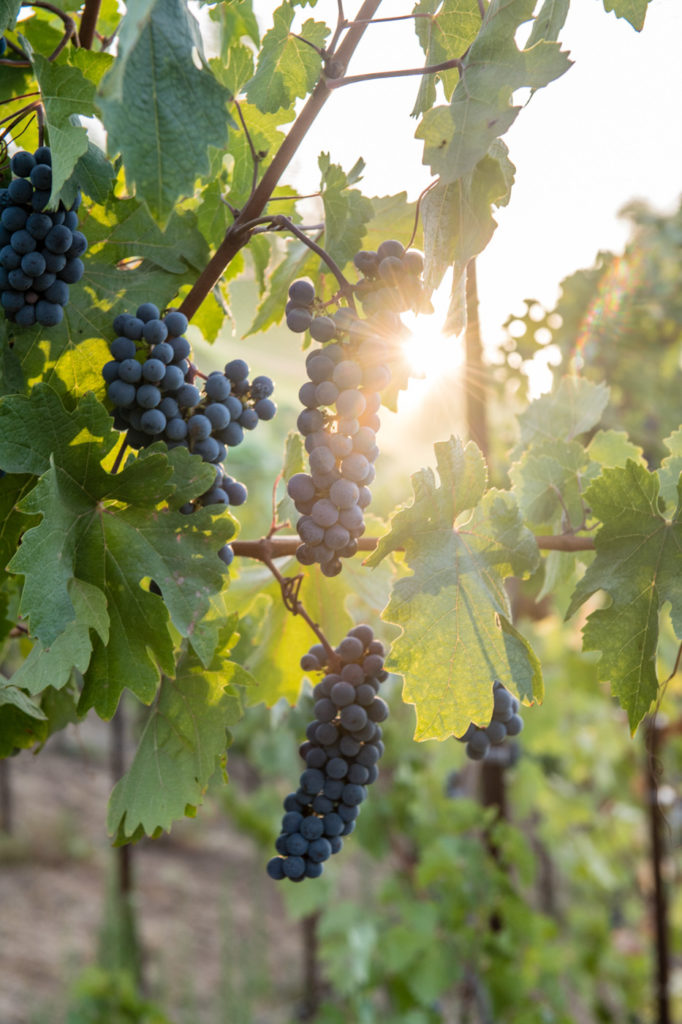
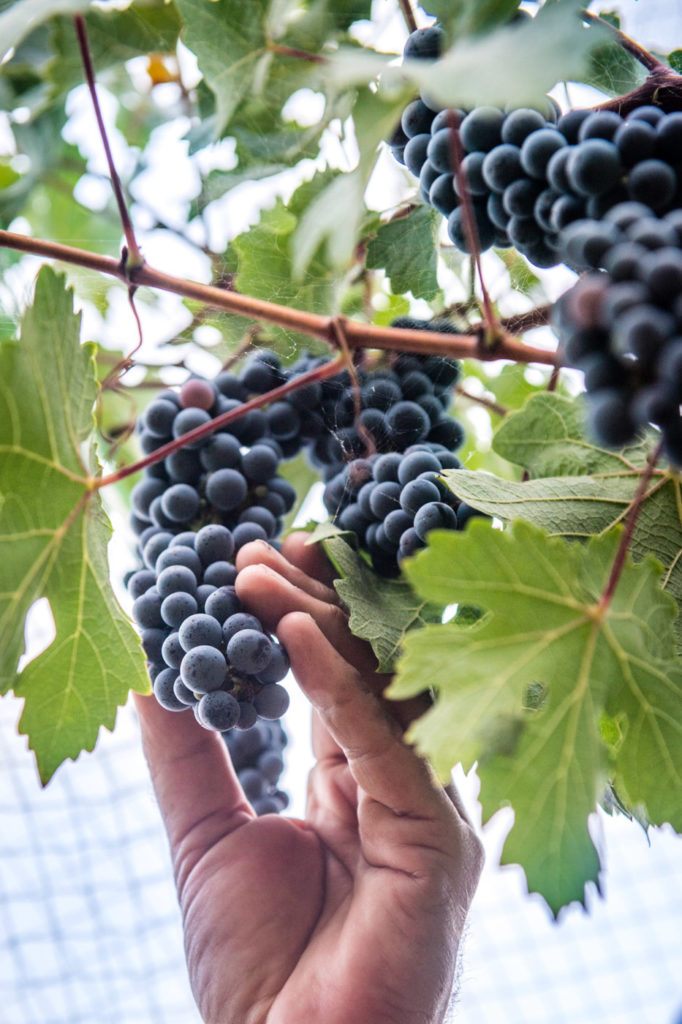
Growth and Grapes
Fast forward to early September of this year and I’m looking out over our vineyard that is covered in plastic netting. Since the grapes first started growing in June we made the expensive decision to cover the vines to stop birds from eating our fruit. Although it added to my workload during the summer months, as I needed to make twice-daily walks through the vineyard to free any birds or small animals that had become accidentally entangled while trying to reach our grapes, it turned out to be right decision.
Two brix tests in ten days gave us the sugar content and pH of the grapes, and after the second test I got the phone call that it was time to pick our grapes immediately.
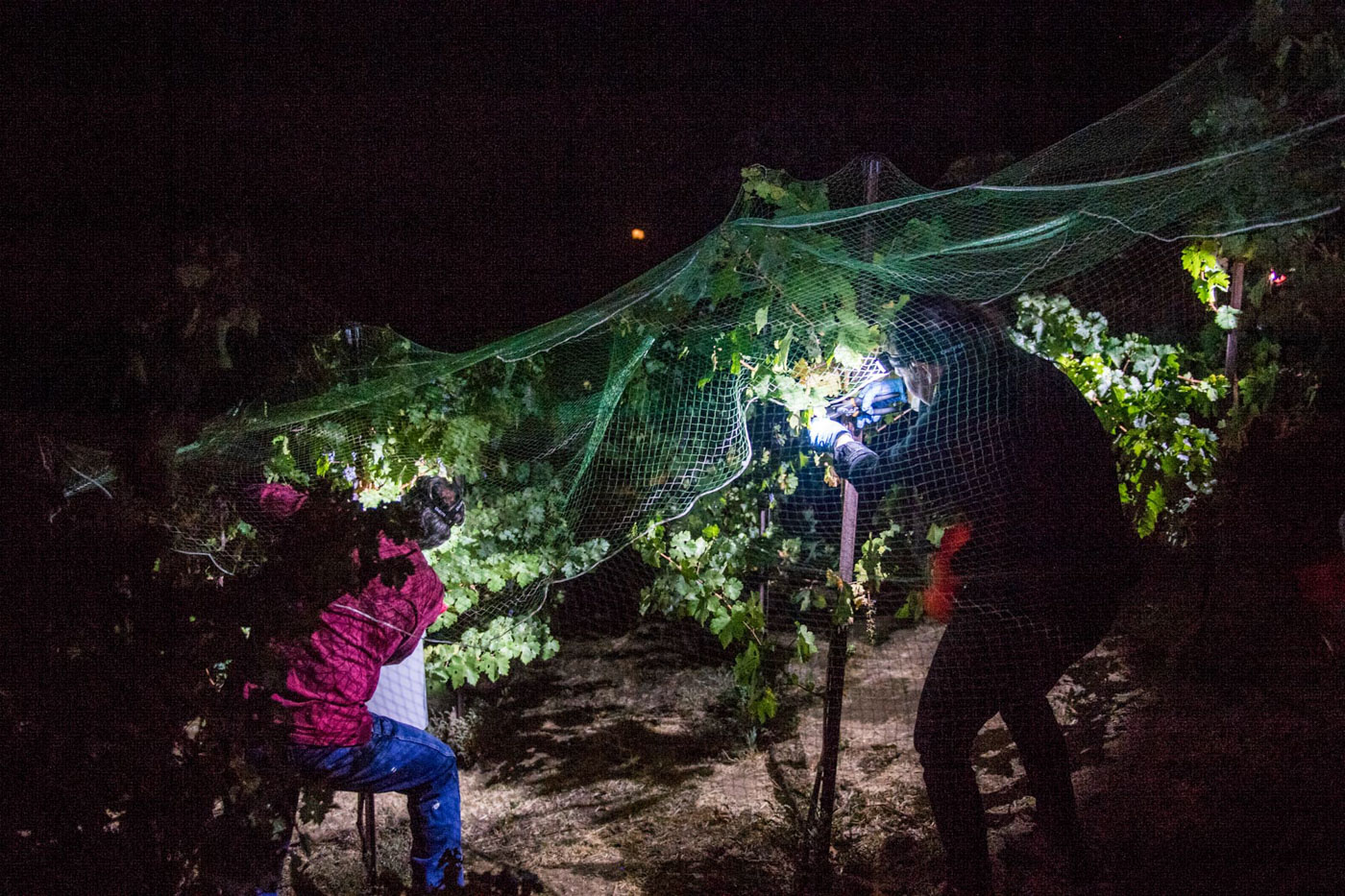
Picking is done at night, as it is the optimum temperature for the grapes, plus you don’t have to contend with bees or yellow jackets attracted to the smell of grape juice. At two a.m. one Saturday in September, Anne and I along with four friends set out to harvest our first grapes.
Over the next seven hours, each of us was armed with four-gallon buckets, a pair of pruning shears, and a headlamp. We picked every bunch of grapes we could find. It was some of the hardest physical work I have ever done in my life; it was utterly exhausting, but also exhilarating.
The marine layer from the Pacific Ocean moved in early that morning just before dawn, shrouding the vines in a mist that dripped on everything and soaked us all to the bone. It made the grapes sparkle with a luminescence I’ve never seen before. They looked like diamonds when caught in the light of our headlamps.
I had worked for this day for the better part of four years, and although we were stumbling around in the dark I felt we might actually be achieving something as bucket after bucket of cabernet sauvignon grapes started to fill up the two one-ton crates in the back of my pick-up truck.
Harvest was over by eight a.m. The vineyard was done too; it looked like a swarm of locusts had passed through, but sitting in the truck in the early morning sunshine were two mountains of 1.5 tons of deep purple, ripe grapes.
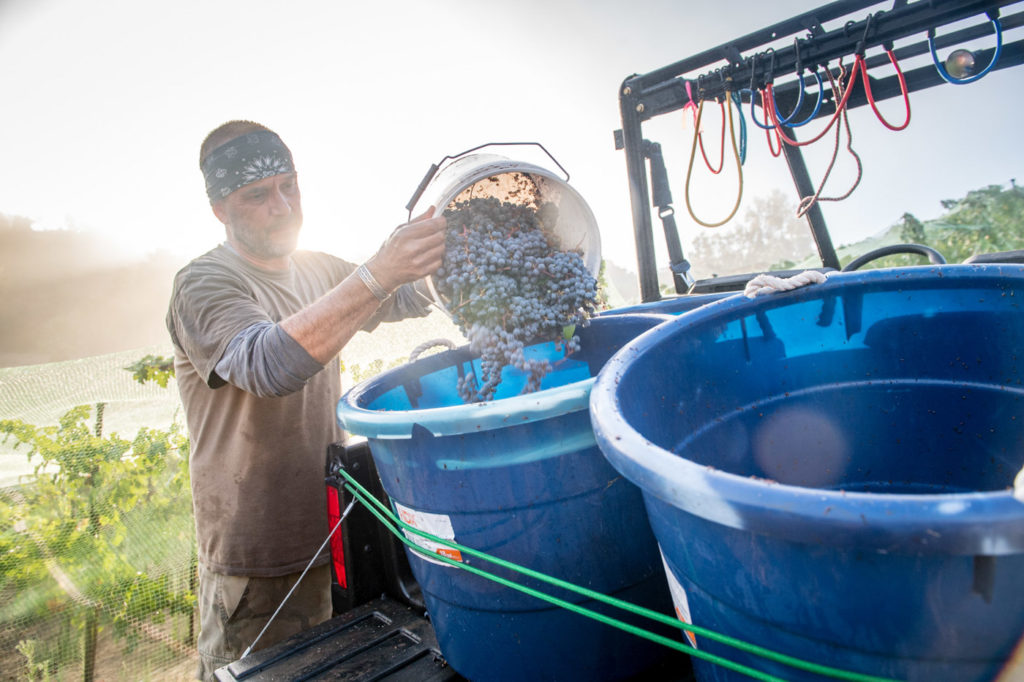
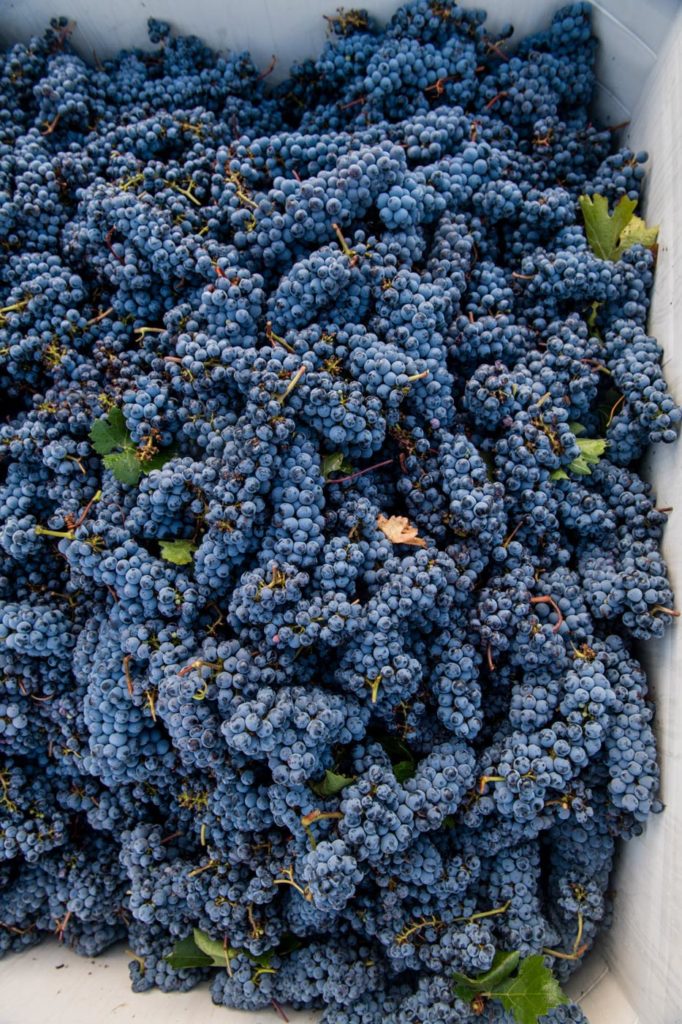
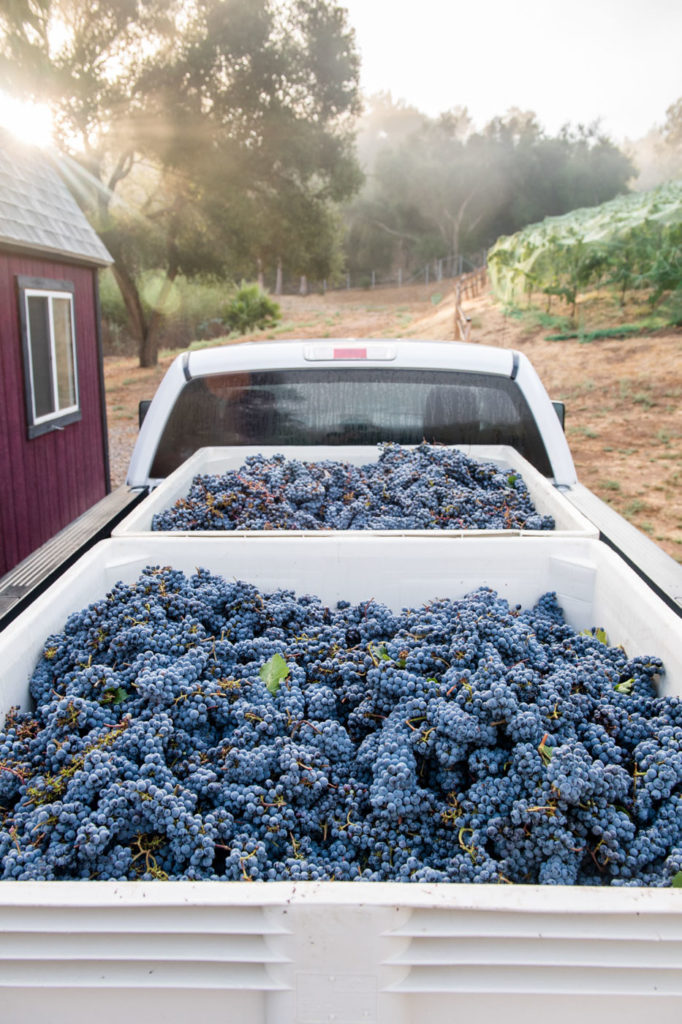
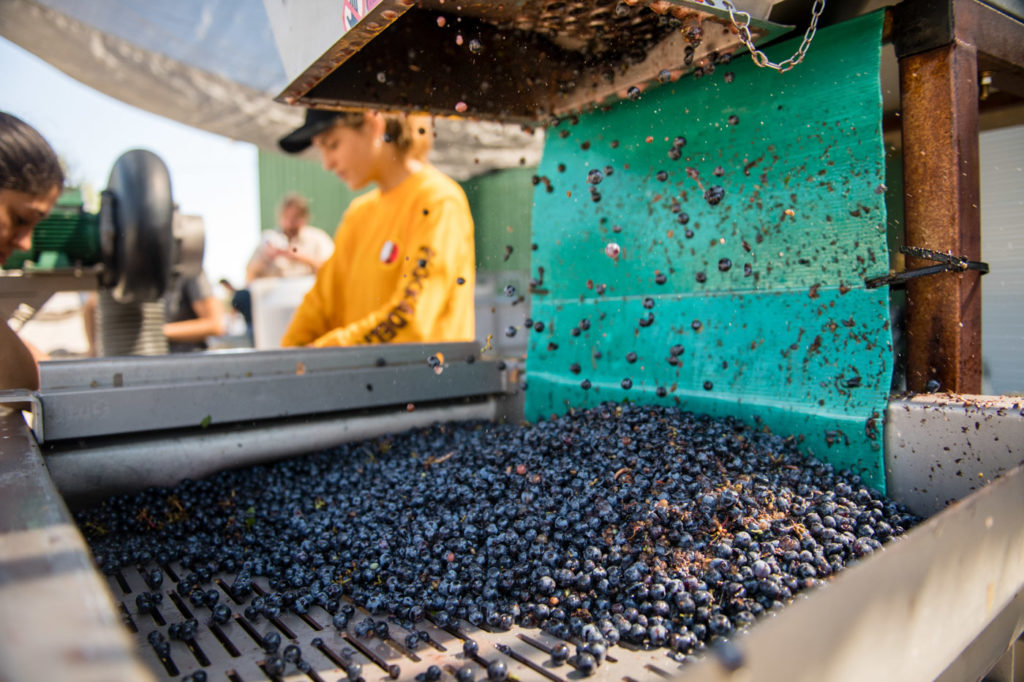
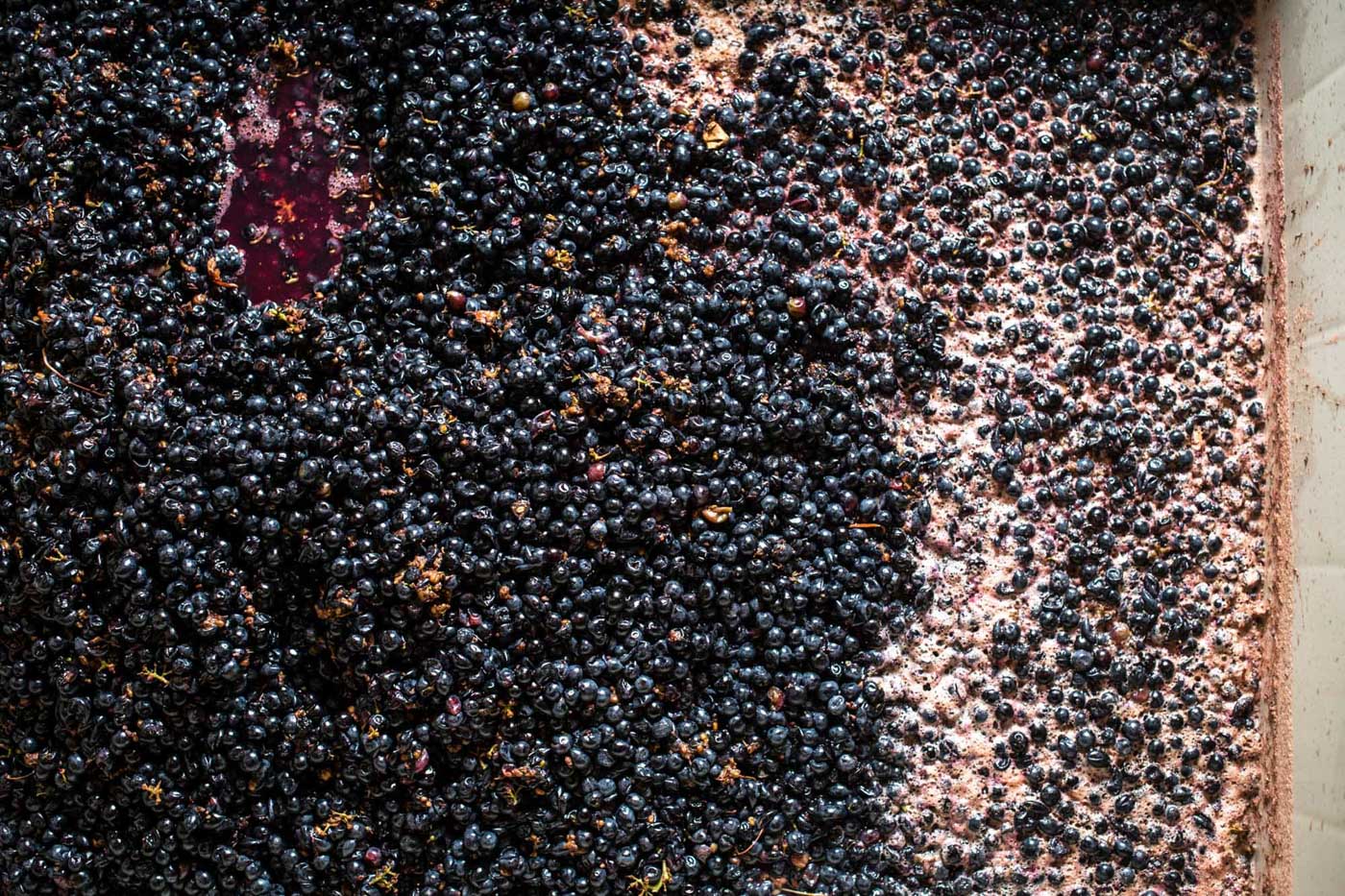
An hour later I drove to Fallbrook Winery where the grapes were weighed and processed through the sorting table. They are currently fermenting, and in a few weeks we will know if this year’s first harvest is good enough to stand on its own, or perhaps will be blended with other grapes. Mission accomplished. But next year I’m hoping for an even better harvest.
We’re often asked if we are going to produce our own wine. And that may well happen in the next few years. But until then my main focus is to try and grow the best cabernet sauvignon grapes in Southern California.
Running a vineyard requires a huge amount of dedication, hard work, and perseverance. And now, if you’ll excuse me, I think I hear running water in our vineyard.







Our comments section is for members only.
Join today to gain exclusive access.